#which made going through his storyline not a desire for me but rather a chore; AND it didn't endear him to me but made me go
Explore tagged Tumblr posts
Text
(oh, i should not be trying to playfully weigh in on a "who's your LEAST favorite companion?" post, it starts off lighthearted and then it makes me go on my Fenris-rant again)
#squirrel plays dragon age#long story short; I don't dislike the character per se; I just think Gaider wasn't the right person to write him#and I feel somewhat vindicated by the knowledge that he didn't really choose to write him but was more or less left with him#David Gaider is a good but very unsubtle writer. he writes feelings that are LOUD and CLEAR and PASSIONATE. which is not a negative#it can work splendidly; for characters who can carry that weight and stand up to it#like Dorian for instance- I think he's Gaider at his absolute BEST for me. LOUD and PASSIONATE but also OOZING charisma#and the apparent arrogance and flippancy just adds to that. knowing the image he wants to present and how he demands to be seen;#the lines/feelings that don't match what he says or that warm and vibrant persona create a kind of contrast I wanna explore#but Fenris... he feels just as loudly; but both he and the story approaches that passion from a different angle#his loud feelings are cold and ugly; so getting close is an uphill battle solved mostly by the player finding him intriguing#or charming; and WANTING to figure him out and interact with him to find out where those feelings come from#he's not crying out to be known; he recoils from you and snaps at you at first; and you have to keep pushing to get past that#all while holding (reasonable but hard) views that snag and create uncomfortable conflicts with most of the cast and usually the PC too#which... I could personally take or leave; so being pushed away deliberately; well; it achieved the intended effect for me#I DO feel pushed away. but since I don't personally find myself very charmed or intrigued; I also don't feel compelled to keep pushing back#looking at it through my Hawke; I don't see much of a reason for him to be in my party besides the expectation that I'm meant to like him#and can't explain it away by my Hawke liking him either because with the kind of characters I like to play; he just... doesn't jive#which made going through his storyline not a desire for me but rather a chore; AND it didn't endear him to me but made me go#“well I get why you're the way that you are now.... I still don't really wanna spend time around you tho”#i realize it's ofc not the same for others; but to me; it didn't end up giving me much satisfaction#aw dangit; look at that; i started my rant again#why didn't anyone stop me huh#oh well slapping on a#fenris critical#and shoving this catharsis out the door like the incorrigible yapper that i am
1 note
·
View note
Text
A Hero Lies in You
On April Fool’s Day 2019, a video was released showing the latest game in the Yakuza franchise. Many thought it was a prank. The reason why? The sudden change in combat. Gone was the brawler beat-em-up that was associated with the series. In its stead was a turn-based system reminiscent of role-playing games. Characters waiting for their turns before utilising special skills? In a franchise known for its hard gritty storylines about gangs duking it out in the streets of Japan? ‘Haha Ryu Ga Gotoku. You thought you could fool us, but we see right through you. This isn’t our first rodeo and you’re not Square Enix,’ was many a thought when the footage had been viewed by thousands online.
What gamers did not know was that this was no gag. Fast forward several months to August 2019 and it was confirmed that Yakuza 7: Like a Dragon, starring new protagonist Kasuga Ichiban, would actually incorporate turn-based battles. There would even be JOBS!
As I had just finished playing through Kiryu’s story, as well as Judgment, in 2020 I was eager to see what new protagonist Kasuga Ichiban would bring to the table. From trailers, I could already see how much livelier Ichiban would be in comparison to the more stoic Kiryu. And, in contrast to Yagami, he was definitely more of an idiot. A lovable idiot, to be sure, but an idiot nonetheless.
Yakuza 7: Like a Dragon released in a huge week for video games. While I would have preferred to play it earlier, I had other huge titans to wrestle into submission first. Once I had managed to satiate my Ubisoft open-world needs with Assassin’s Creed: Valhalla, I dived head first onto the streets of Yokohama, ready to bust some heads.
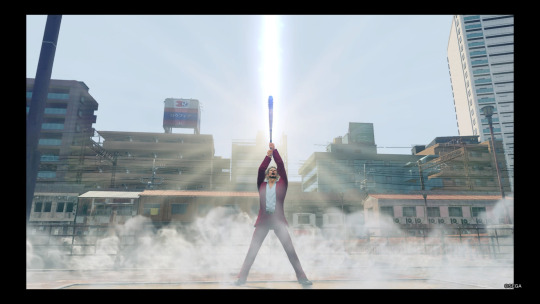
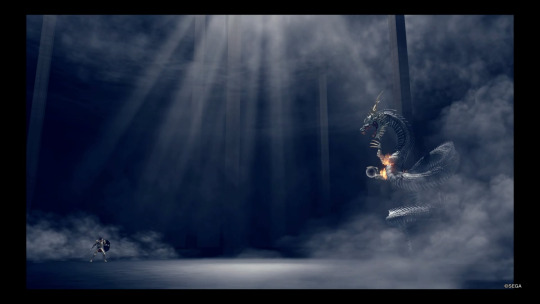
The game opens on a play. For a moment, I thought I had somehow purchased the wrong game. But as the lengthy prologue progressed, it was very clear that this was most definitely a Yakuza game. It just needed to set up a little bit of the tale, starting with Arakawa Masumi - father figure and role-model for our erstwhile hero. It isn’t long before players are introduced to Kasuga Ichiban with his trademark ‘punch perm.’ Born in a soapland and raised by those that lived on the fringes of society, Ichiban, rather than being hardened by his experience, is empathetic and not afraid to show emotion. Tasked with collection, he interprets his orders in a way to benefit those that are struggling. His goofball attitude immediately makes him a character one can connect to. And it doesn’t hurt that he’s a bit of a nerd, having played Dragon Quest during his childhood and likening many of the people around him to things in the game.
It’s not long before the plot escalates and Ichiban volunteers to give himself up to the police. Sentenced to fifteen years in prison, he inadvertently extends his sentence when his Patriarch is insulted by one of the fellow inmates. After nearly two decades spent in prison for a crime that he did not commit, Ichiban is released with little fanfare and no waiting convoy. Disappointed, he takes it in stride. The first thing on his order of business: to get his signature punch perm and reconnect with his second father-figure and Patriarch of the Arakawa family.
Along the way, he is dogged by a former policeman: Adachi. At first, it isn’t made clear why Adachi seeks Ichiban for help. After all, Ichiban had supposedly killed another yakuza in Kamurocho, Tokyo. Adachi, on the other hand, was a detective in Yokohama. Why would he have any interest in uncovering the truth behind what had put Ichiban behind bars?
After a few shenanigans are had in and around Kamurocho, our protagonist is shot and left for dead - waking up in a homeless shelter in the heart of Isezaki Ijincho. Climbing his way from rock bottom, Ichiban embarks on a journey to uncover the truth, stumbling upon a series of events and unearthing a vast conspiracy in which he was to serve as a pawn.
Many of the earlier chapters felt a little contrived. In particular was the death of Nonomiya. While it served to move the narrative forward, it was most assuredly a means to an end that didn’t highlight any significant character growth. Poor Nonomiya was fridged just to bring Ichiban into conflict with the Liumang branch of the Ijin Three.
It was only in the later chapters that the story picked up steam - with the confrontations with Bleach Japan and the encroachment by the Omi Alliance. Joined by a menagerie of characters like Zhao, Saeko, Han Joon-Gi, Nanba and Eri, there was a lot to keep track on as the plot barrelled forward at a breakneck pace, connecting Ichiban’s past with his current present and all the while setting up a juicy conflict between two men that could have been brothers. And honestly, the ending with Arakawa Masato and Ichiban got to me. I loved how that Ichiban was finally able to reach his old charge by being vulnerable and finally letting out a little of his resentment at the life Masato led, despite the fact that he could not use his legs.
The characters were superbly written and their motivations were a good reflection of the human condition. The themes of family and finding a home were evident, right from the start, even though a lot of it was glossed over by Ichiban’s desire to be a hero in a video game.
(I also really liked Seong-hui and would love to see her be an actual playable character in possible future instalments. On a side note, Arakawa...you cannot simply say: ‘See you tomorrow, Ichi,’ and expect to walk away. You basically wrote your own name into the Death Note with that line!)
As far as aping Japanese role-playing games go, however, Yakuza: Like a Dragon falls woefully short. While the Tendo twist was a good one - it was pulled a little too early. Worse, there was no world-ending threat. Everyone knows that a Japanese role-playing game MUST HAVE A VILLAIN/ EVIL GOD FIGURE THAT INTENDS TO DESTROY THE WORLD. Yakuza: Like a Dragon was too focused on old childhood rivalries to extend it further afield. I mean, yes, Aoki Ryo hoped to pull the strings of the Japanese government as chair of the CLP, but WHERE WAS THE METEOR HURTLING TOWARDS EARTH?
Honestly, 1/10 for holding true to Japanese role-playing games.
Other than that, the summons with Pound Mates was amusing. As were the side stories. Honestly, there can never be enough side stories to flesh out the wacky world of the Yakuza franchise. So many old favourites made their return. From Pocket Fighter (now dubbed Dragon Fighter) and Gondawara Susumu with his baby fetish.
Also, I didn’t think I’d be so obsessed with it, but I think they cracked property management this time round. Ichiban Confections, later known as Ichiban Holdings, was a blast to manage and accrue juicy money for.
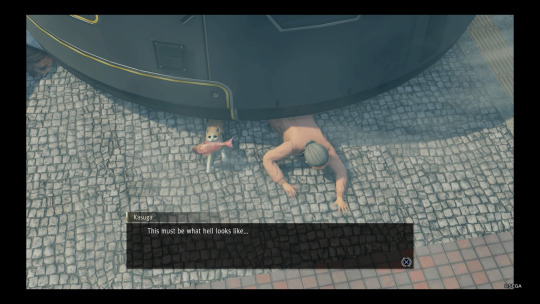
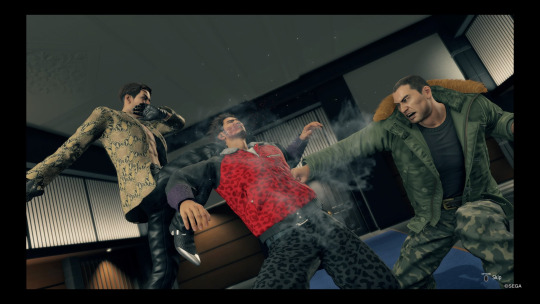
The bartender of Survive also looked very familiar. I mean...what with the huge scar across his face. My suspicions were confirmed when I searched up Kashiwagi up on the Yakuza wiki page and was awarded with the fact that HE MANAGED TO SURVIVE THE ASSAULT HELICOPTER FROM YAKUZA 3!!
Other than that, my few other gripes involved the implementation of the levelling system and the way area of effect skills were handled. In particular, the pathing for how characters moved around the battlefield proved, at least to me, a bit of a frustration. Often, characters would be blocked by a knee-high fence or a corner. Sometimes they would be able to go around, but other times the game (after several seconds of watching them fail to walk through a solid building) warp to the enemy that I had targeted to launch their attack.
And even though the combat is turn-based, most of the enemies tend to walk around the battlefield - either clumping together or distancing themselves from each other. What truly annoyed me was when there were moves that could be used as an area of effect, with the MP cost to go along with it, but were limited by their effectiveness when the enemy combatants were too far away. Yes, it makes sense, but golly gosh, how much of a pixel measurement does it have to be for it to not hit?
Besides that, the levelling was also a bit of a tedious chore. Were it not for the invested vagrants, I feel like I might have put the game down with how much grinding there was - particularly when it came to the various jobs. The biggest hill to climb was from 20-30. Without the exp (experience point) boosting items, it would have been a torturous slog. I know that in the original Japanese release of the game, the cap for jobs was level 30, but if you change it to 99, please, for the sanity of all the gamers out there, tweak the requirements to make it easier. And maybe give normal trash mobs a bit more experience points for the playable characters to munch on.
Goodness, imagine having to grind on level 55 Ornery Yakuza and receiving a paltry 1000xp for each battle (when, in order to level up a job, you needed almost a million).
Yakuza: Like a Dragon is a break from the traditional formula that’s been a staple of the franchise for many years. Much like Ichiban, it’s a bit of fresh air to liven up the experience that might have gone a bit stale after I slogged through the whole Kiryu arc last year. With a few tweaks, and a few more Persona 5 CD soundtracks, I’m eager to see how the story evolves and whatever contrivances Ichiban will somehow force him into.
Although, to be fair, is it still appropriate to call this franchise Yakuza when the game literally saw the dismantling of the two biggest clans? Then again, Civilian: Like a Dragon 2 just doesn’t have the same ring to it. In any case, I hope the next one comes soon and we’ll be able to have Seong-hui in our party. I feel like she’d be wielding a gunblade.
(Did I just use a lyric from Mariah Carey? You bet I did! I had been tossing up the idea between this line and ‘I need a hero.’ Why? Well, I think that would be self-explanatory after knowing Ichiban’s proclivities. And it fits so, so, so well!)
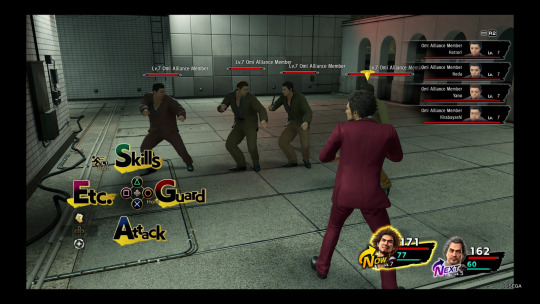
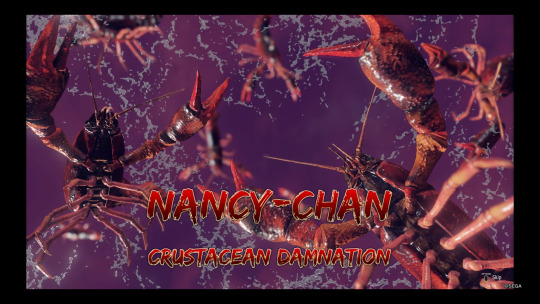
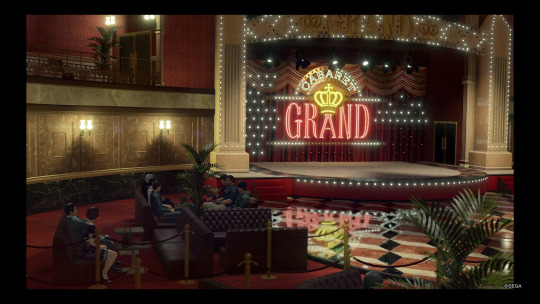
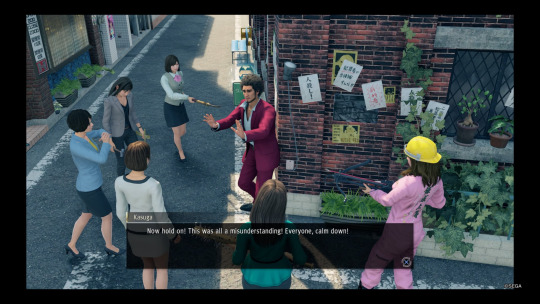
10 notes
·
View notes
Text
Why Torna will always be the Golden Country
Apologies to those who have the pleasure of hearing this opinion on a daily basis, but Xenoblade Chronicles 2 is a good game. In fact, in a year that brought us Mario Odyssey and Breath of the Wild, Xenoblade stood out as my favourite game I played in 2017. Hopefully I’ll have a chance to defend this opinion shortly, but in the interim I’d like to give a brief backstory of my relationship with Xenoblade.
I didn’t Play Xenoblade 1 or X. Actually, it wasn’t until Xenoblade 2 came out that I even considered buying it at all. The only reason I bought it at all was to round out the ‘Year of Nintendo’ having bought a new AAA Switch game every month. I didn’t even play other Japanese RPGs like Final Fantasy and games like Octopath Traveller didn’t interest me in the slightest after playing Xenoblade.
The basic premise of Xenoblade is that you are a Driver, basically a swordsman, who has up to three Blades at a time. Depending on which Blade you have engaged at any given time, you have different elemental attacks which have individual effects. Rex, the protagonist, accidentally encounters the most powerful Blades in existence. First is Pyra, an Aegis who becomes the main companion of Rex and is the key component to the story. Then there’s Malos and Jin, the antagonists, who want Pyra dead for reasons that only 100 hours of gameplay can really make clear.
When I played Xenoblade, it took me hours and hours and hours to finally clock the combat system, by which point they’d added various combos, gauges and other factors to start thinking about. Every time it stepped up the complexity, I was drawn further in. And, though everyone else hates it, I found the cutscenes to be fun and enjoyable. The story managed to suck me into learning everything about the universe that I knew nothing about, in a way that Skyrim never coaxed me into.
Where Xenoblade Chronicles 2 falls short is in its length, clocking in at well over 100 hours from start to finish and immeasurably longer if you’re interested in all the side quests. Also the combat system, while is engaging in isolation, can get tedious during grinding and uninteresting side-quests. Oh and the map/waypoint system leaves a lot to be desired. And there’s too many blades which bond with a given driver permanently. And Poppi is a super irritating blade to try and manage. Despite all these factors, the sheer scope, beautiful environments and complicated storyline kept me hooked to the point where a year on I’m still itching to get back on and start a new game from scratch, then start a new game plus to 100% it. If I had another 300 hours to spare, I would.
This year, the Xenoblade team made a magnificently unique choice. They released a DLC pack called ‘Torna: The Golden Country’, a prequel that explores Jin, Malos and the characters you meet only in flashbacks during the main game. Well, yes that’s been done plenty. But this DLC is also a stand alone game. You can walk to the shops and buy Torna without having touched the main game.
Torna is perfectly crafted to exist as a standalone game to those who have no idea Jin is destined to become a villain in the future as well as for those who know everything about Lora’s future but want to learn more about her past. Lora in general, actually, is an excellent protagonist compared to Rex. She is flawed and heroic in organic ways where Rex was built to be a generic, blank-slate, hot-headed but good-willed kid like we’ve seen time and time again.
If you’d not guessed it yet already, Torna: the Golden Country being a standalone game is the perfect way to release this game. Not only because it entices people into the franchise with a much more manageable £20 price tag, but because it lets me get away with calling it my Game of the Year 2018.
Lets start with the squad. Xenoblade 2 has Rex, Tora, Nia, Vandam, Zeke and Morag as the main components of the party, each of which has 1 ‘key component’ blade who has their own character traits and 2 more blades which are assigned by the player. That makes it incredibly busy and gives you lots to keep track of. This works in a 100 hour campaign, but for a 20-30 hour DLC pack it would be far too much. That’s why Torna has just 9 (playable) characters. Lora, Adam and Hugo will always be your party and each has exactly 2 blades. This compacts the experience and allows the developers and the player to focus all their attention on these characters to develop them all as much in 20 hours as Xenoblade 2 does in 100. Admittedly Hugo felt a little generic, as though he’d already had his story arc, but that’s of little consequence.
The world is compacted down too, Xenoblade 2 sees you scouring dozens of Titans (basically islands) with snow, plains, cities, forests, oceans and all kinds of different environments, each with its own distinct feel. Torna has just two Titans to worry about, the sprawling Gormott, which exists in Xenoblade 2 as a similar but distinctly changed map, and Torna itself, which is divided into several sub-sections for ease of navigation. It would have been nice to have one extra environment to explore, but these two are all you really need. Gormott is so vast that it’s easy to forget what you’re doing because you saw a chest in the distance while Torna is compact and incredibly functional, making it easy to catalogue all there is to do and work at it methodically. This also make the enemies you fight consistent and there tends to be more of a focus on animals than generic human soldiers than the full game.
The story itself is engaging but curiously, fails to address a lot of the questions I was left with at the end of Xenoblade 2. Adam in particular is an elusive character in Xenoblade 2’s flashbacks but we meet him in Torna after he’s done his ‘legendary’ stuff without ever finding out what it was. It does an excellent job of going over the basics without dwelling on stuff we already heard Rex talk about every half hour in the main game but I can only hope these gaps in the story can be filled in through future games.
Some smaller changes include the campfire crafting, which replaces a majority of the NPC interaction in the main game. Shops are few and far between so you must make do with what you can make yourself. In the grand scheme of things, very little is changed with this alteration besides (as I’m sure you’re sick of me saying) condensing the gameplay down.
The only considerable drawbacks from the game, which if you’ve read any other reviews you’ll be more than aware of already, are that the voice acting is a very acquired taste and the characters will repeat the same half dozen phrases in combat for the entire adventure. More frustrating though is the wall you come against at two points in the game. There are two segments in which your only quest will become ‘do X side quests’, amounting to around 50 side quests that are unavoidable to complete the game. This didn’t affect me because the side quests were a natural part of my progression in the game, so I was only ever a couple away from my target anyway but if you were hoping to blast through the story without touching the optional quests, you will get angry. The optional quests themselves vary a lot from ‘kill x enemy’ to genuinely engaging sub-plots that span the whole game. Generally I found them to be an enjoyable extension of the game rather than a chore but I can see why others would disagree.
When Ubisoft talked about their Donkey Kong DLC for Mario Vs Rabbids, they explained how the DLC was actually quite a lot easier than the main game was in its later levels. It was an expansion, not an extension. Given that Torna is marketed for both newcomers and veterans, it’s easy to see how the complicated gameplay would be a barrier for one of these two groups. Newcomers would have to learn a 100-hour gameplay loop in 1/5 the time or veterans would be left bored that their hours of learning were wasted as Torna becomes too easy. The gameplay is by far the best part of Torna.
The very basic concepts are still in place, Lora still has her Blades and they grant her powers. You still have two other team members and all of you have various elemental attacks that can combo together. Where Torna refines the work of its predecessor is that Blades and Drivers can both be playable in combat. Rather than Pyra granting Rex a fiery sword, Jin can step forward in battle and Lora grants him bonuses. They have special attacks that trigger when they’re ‘tagged out’ which deal more damage and make encounters more interactive. You feel more like a team of 3 characters rather than a Pokemon Trainer with his Fire, Ice and Electric types. There’s also a more effective Elemental Combo system which makes it laughably easy to set up an enemy with all 8 elements and ‘break’ them for a massive chain of damage. This would probably get on my nerves but later in the game, they start to punish you for over-extending. Certain bosses deal immense damage to you if you leave elemental orbs for too long, giving you the choice between setting up and breaking as quickly as possible with the risk of it backfiring or learn new techniques to win battles without elemental attacks. In addition, there being only 9 characters to think about means the developers could build real synergies between them which are easy enough to work out without spending hours trawling through the wiki.
I wasn’t lying when I said Xenoblade Chronicles 2 was my favourite game of last year, standing tall above Mario and Zelda and Splatoon and Pokemon. It was so imperfect that it’s really easy to talk about the problems it had. And, as I hope to explain one day, it is not as good as Odyssey and Breath of the Wild were last year. But it was by far my favourite game. Torna systematically deconstructs Xenoblade 2 to find out where those faults were and how they can be addressed. Torna doesn’t take a 100 hour adventure and cut it down to 20 hours. It fits 100 hours of depth into 20. It makes me truly excited to see how Xenoblade 3 takes the same 20-hour experience and extends it back out to 100.
If the huge investment and complicated gameplay put you off buying Xenoblade Chronicles 2, or if you’re wanting an excuse to jump back onto the Titans of Alrest, Torna: The Golden Country is a must-have.
0 notes